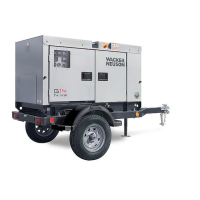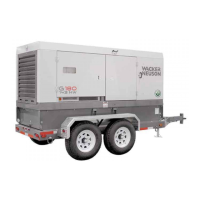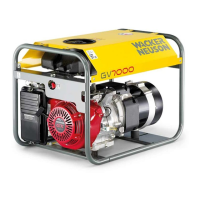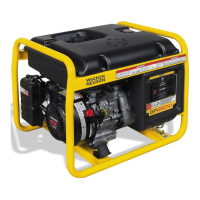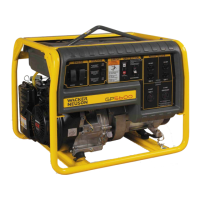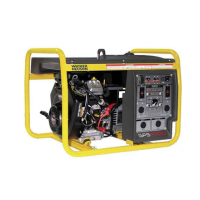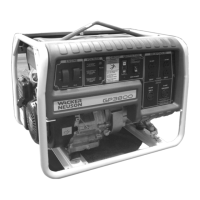4A-4
4A G2.1A/G2.1AE 50 HZ PORTABLE GENERATORS
Figure 4-4. Testing Capacitor
4.8 Capacitors
Testing Capacitor
1. Discharge capacitor as described above, then
disconnect all wire leads from the terminals.
2. Check the capacitor charge and discharge readings
using an ohmmeter as described below or use a
capacitor checker. See Figure 4-4.
Set Ohmmeter on R x 10k scale.
Set meter leads on capacitor terminals. The meter
should deflect momentarily towards zero (fully
discharged) and then slowly climb up to infinity
(charging).
Reverse meter leads and repeat procedure. Results
should be the same.
3. If meter does not deflect torward zero, or deflects to
zero and remains there, the capacitor is open or
shorted and must be replaced.
ALWAYS handle or test capacitors with the engine
stopped. Extremely high voltage is present at the
capacitor terminals while the generator is in use.
Although the capacitors used in this generator are
designed to discharge when the engine is stopped,
it is still a good idea to discharge them manually
before handling. To discharge a capacitor, place a
conductor, such as a screwdriver with an insulated
handle, across the capacitor terminals. Be sure to
touch only the insulated handle. This will short out
across the terminals and discharge the capacitor.
WARNING
1007SD87
4.9 Engine Speed
All generators require a fixed engine speed to maintain
the correct voltage output. Engine speed is controlled by
a governor which automatically adjusts to varying loads
on the engine to maintain a constant speed of 3000 –
3100 rpm.
Testing Engine Speed
Measure the engine speed using a tachometer with no
load applied to the generator. The engine must be
running at 3100 ± 50 rpm. Voltage output is directly
related to engine speed. A slow engine will reduce
voltage. Refer to the Operator’s Manual for engine speed
adjustment.
The generator is designed to produce no output if
engine rpm falls 10% or more below the required
speed (approximately 2700 rpm).
Setting Engine Speed
Setting the engine speed requires the adjustment to the
governor. See Figure 4-5.
To set the engine to the proper speed:
Turn the engine speed adjusting screw (a) in or out
to obtain a no-load speed of 3100 rpm.
CAUTION: Setting the engine speed too high or too low
may damage tools and other appliances attached to the
generator.
1001SD15
Figure 4-5. Engine Speed Adjusting Screw
a

